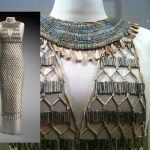Cities and Regions of Ancient Egypt
We’re going to know everything about the Cities and Regions of Ancient Egypt in detail through this blog post from FTS press.
With a tiny section of lush agricultural farmland enveloped by wilderness, ancient Egypt’s cities were constructed close to the Nile River. This guaranteed a continuous supply of water, direct exposure to wild areas in the Niles marshes, and a boat transportation network. Towns and cities were classified as “Topside” or “Decrease.”
Cities and Regions of Ancient Egypt
Egypt was split into two monarchies in antiquity. Lesser Egypt included the towns and villages nearest to the Mediterranean and also the Nile Delta, whilst also Upper Egypt included the urban areas in the south.
Memphis
Memphis, the Old Kingdom’s capital city, was constructed by the kings of the first Dynasty and was one of two major religious centers, the other being Heliopolis. Whereas many gods were worshipped in Memphis, the Chord of Memphis was made up of Ptah, his girlfriend Sekhmet, as well as their son Nefertem. Memphis, about 15 miles to the south of contemporary Cairo, has been a component of Lower Egypt. Memphis started to fade to complete ruin after Alexandria gained prominence in Greek-Roman points of time.
Abydos
This Upper Egyptian town was thought to be Osiris’ burial place. Abydos has become the epicenter of a god’s worship. Abydos is home to the Monastery of Seti I and the morgue intricate of Queen Tetisheri “The Mother of the New Empire.” Abydos has been preferred as a burial site.
Giza
Giza, which was also in Lower Egypt, was a necropolis town for Old Kingdom royalty. Giza is well-known for its pyramids and the Great Sphinx.
The Great Pyramid of Khufu, which stands nearly 500 feet tall, is one of the world’s last antiquity Wonders of the world. The Pyramids of Khafre as well as Menkaure have been two several well Giza pyramids. The Giza dry spell is home to such structures.
Thebes
Thebes, one of antiquity Egypt’s most noteworthy urban centers, was indeed the state capital of the Center and the Fresh Kingdom dynasty. Amun, Mut, and Khonsu were the members of Thebes’ Triad. Thebes, situated in Upper Egypt, also is home to two significant shrines, Karnak as well as Luxor. The Valley of the Queens and Kings is a desert burial chamber situated on the western bank of the Nile River, exactly the reverse of the city.
Heliopolis
Heliopolis was indeed the biggest city and most important religious center in pre-dynastic Egypt. The ancient Egyptians considered Heliopolis to be the birthplace of Atum, this same sun god, in addition to the Ennead of Heliopolis.
Aswan
Aswan is the location of the Nile River’s first eye disease as it trickles freely on its journey to the Mediterranean. Ramses II tried to carve his ginormous tomb, Queen Nefertari’s tomb, as well as the Temple of Philae into the cliff face above Aswan. These temples were migrated in the 1960s to avert of been deluged by the Aswan High Dam’s waters.
Dendera
The Dendera Temple Complex is located in Upper Egypt. Its Monastery of Hathor is one of the oldest surviving temples in Upper Egypt. The Monastery of Hathor was a famous pilgrimage destination as Hathor’s cult town. Dendera had a clinic as well as being the central focus for Hathor’s cultural events. In addition to traditional medical treatments
Look here; dangers dangers of traveling to Egypt
Why were ancient Egyptian cities split into territories?
Ancient Egyptian Cities and Regions Ancient Egyptian cities were established near the Nile River so that citizens could benefit from the delivery of goods by boat. Towns and cities were classified as “Upper” or “Lower.”
Why were there so many cities in ancient Egypt?
Whereas the majority of ancient Egypt’s inhabitants lived in different villages and settlements, the country created a system of major cities that were often built around trading hubs and religious centers. Egypt’s cities were constructed near the Nile River to guarantee appropriate water and food materials, as well as boat transportation.
What was ancient Egypt’s most recognized?
Heliopolis is among the most ancient and significant cities in Egyptian history. The city was most likely the most significant religious center ever built. The city is in lower Egypt, northeast of Cairo.
What was the ancient Egyptian capital of Thebes?
Thebes was indeed a significant political and religious center. It was home to many significant temples, including the Temple of Luxor as well as the Temple of Karnak. The Canyon of the Kings is located close to Thebes. From 332 BC to 641 AD, Alexandria did serve as that the country’s capital.
Look here ;Ancient Egyptian Clothing
Why does the Nile have so many ancient Egyptian cities?
Ancient Egypt gave birth to numerous hideouts that molded the inheritance of this invincible country over the curriculum of much more than three thousand years. All of the significant ancient Egyptian cities were started building on the banks of the Nile, which served as humanity’s lifeblood.
Ancient Egyptian Cities and Regions Facts
Whereas the majority of ancient Egypt’s inhabitants lived in tiny villages as well as settlers, the country grew into some larger cities that were frequently constructed around trading posts and religious centers.
Egypt’s cities were built near the Nile River to guarantee appropriate water and food materials, as well as boat transportation.
Lower Egypt was close to the Nile Delta and the Mediterranean, while Upper Egypt was nearer to the initial Nile cataracts.
In ancient Egypt, there must have been 42 names or regions, twenty-two in Upper Egypt and 20 in Upper Egypt.
Ancient Egypt had at least 6 main cities during its 3,000-year heritage: Alexandria, Thebes, Memphis, Sais, Avaris, and Thinis.
Thebes was a major city in Egyptian Civilization and the middle of the Amun cult. Ramses II sculpted his gigantic tomb and that of his Queen Nefertari on the cliff face above Aswan to demonstrate his power and riches and to deter Nubian interlopers.
Alexandria, established by Alexander the Great in 331 B.C., had become Egypt’s headquarters during the Ptolemaic Dynasty until Egypt was invaded and occupied as a region by Rome.
Ancient Egypt had at least 6 main cities during its 3,000-year heritage: Alexandria, Thebes, Memphis, Sais, Avaris, and Thinis.
Thebes was a major city in Egyptian Civilization and the middle of the Amun cult. Ramses II sculpted his gigantic tomb and that of his Queen Nefertari on the cliff face above Aswan to demonstrate his power and riches and to deter Nubian interlopers.
Alexandria, established by Alexander the Great in 331 B.C., had become Egypt’s headquarters during the Ptolemaic Dynasty until Egypt was invaded and occupied as a region by Rome.
In closing
We knew everything about Cities and Regions of Ancient Egypt in detail through these previous points in detail, and we hope you like it too much buddy.








